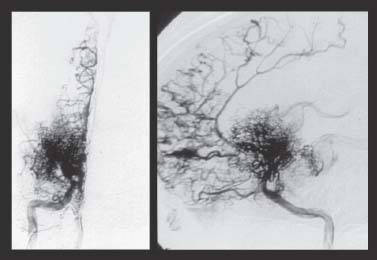Case 40 Moyamoya Disease Abdulrahman J. Sabbagh, Jean-Pierre Farmer, Jie Ma, Ahmad I. Lary, and José Luis Montes Fig. 40.1 Cerebral angiogram, internal carotid artery injection, with anteroposterior (A) and lateral (B) views.

 Clinical Presentation
Clinical Presentation
 Questions
Questions
A physician starts her on aspirin 81 mg per day; by the time she sees you, she develops a new left foot drop.
 Answers
Answers
40 Moyamoya Disease
Case 40 Moyamoya Disease Fig. 40.1 Cerebral angiogram, internal carotid artery injection, with anteroposterior (A) and lateral (B) views.

 Clinical Presentation
Clinical Presentation
 Questions
Questions
 Answers
Answers
< div class='tao-gold-member'>
Only gold members can continue reading. Log In or Register to continue
Stay updated, free articles. Join our Telegram channel

Full access? Get Clinical Tree


